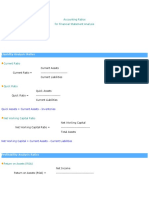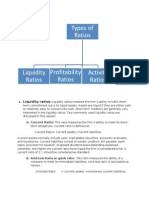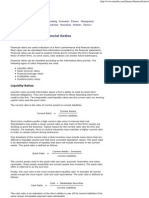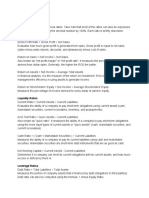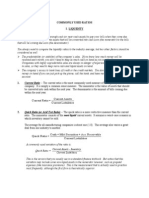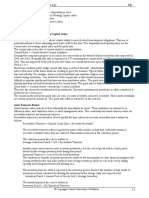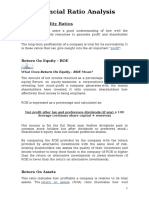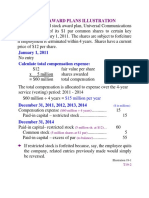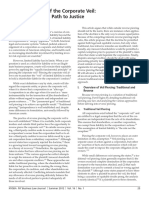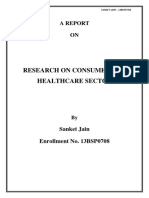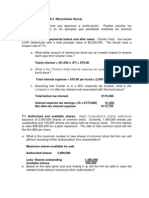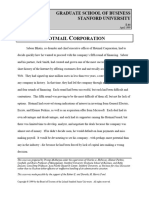0% found this document useful (0 votes)
75 views6 pagesCurrent Ratio Current Assets / Current Liabilities
The document defines and provides details on various financial ratios used to evaluate the liquidity, profitability, asset use efficiency, and dividend policies of companies. Key ratios discussed include the current ratio, acid test ratio, debt to equity ratio, profit margins, return on assets, inventory turnover, and dividend payout ratio. Acceptable ranges and what high or low ratios may indicate about a company's financial performance and position are also outlined.
Uploaded by
Ankush ShindeCopyright
© Attribution Non-Commercial (BY-NC)
We take content rights seriously. If you suspect this is your content, claim it here.
Available Formats
Download as DOCX, PDF, TXT or read online on Scribd
0% found this document useful (0 votes)
75 views6 pagesCurrent Ratio Current Assets / Current Liabilities
The document defines and provides details on various financial ratios used to evaluate the liquidity, profitability, asset use efficiency, and dividend policies of companies. Key ratios discussed include the current ratio, acid test ratio, debt to equity ratio, profit margins, return on assets, inventory turnover, and dividend payout ratio. Acceptable ranges and what high or low ratios may indicate about a company's financial performance and position are also outlined.
Uploaded by
Ankush ShindeCopyright
© Attribution Non-Commercial (BY-NC)
We take content rights seriously. If you suspect this is your content, claim it here.
Available Formats
Download as DOCX, PDF, TXT or read online on Scribd
/ 6


